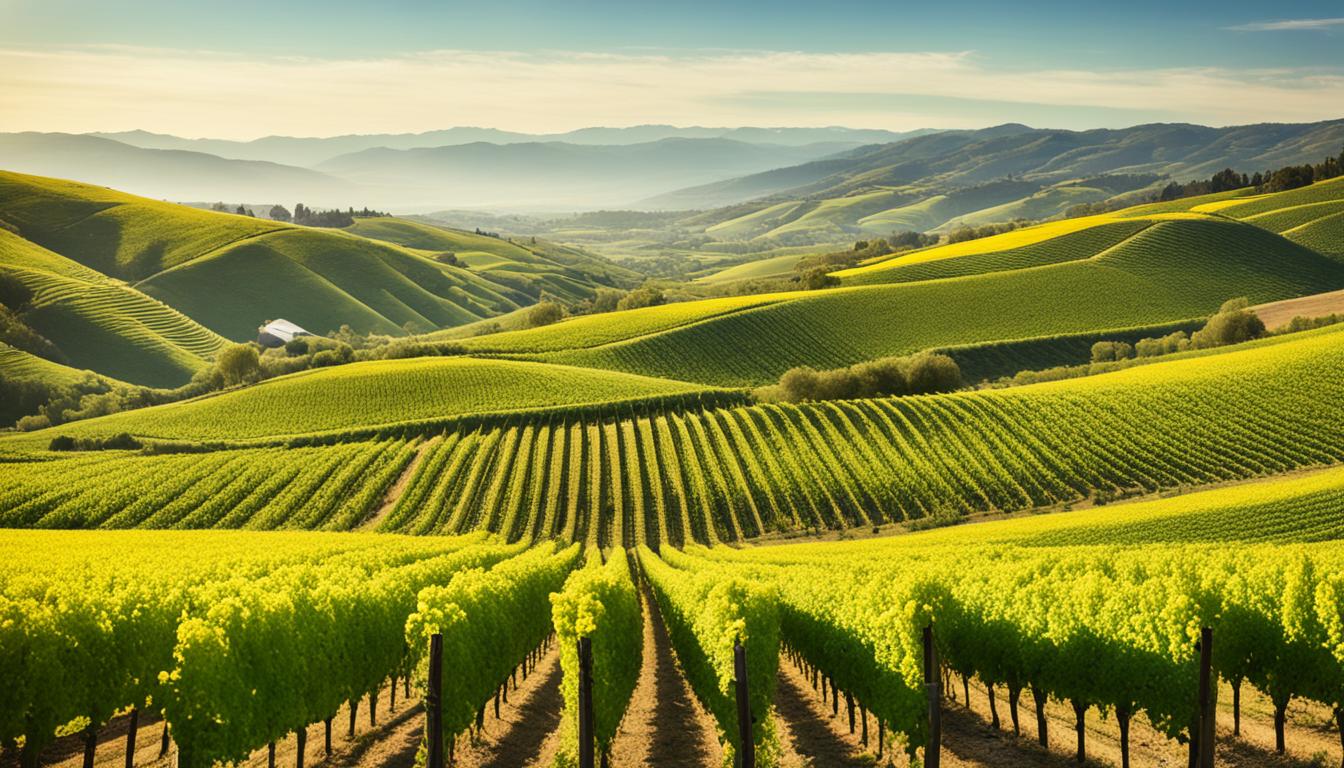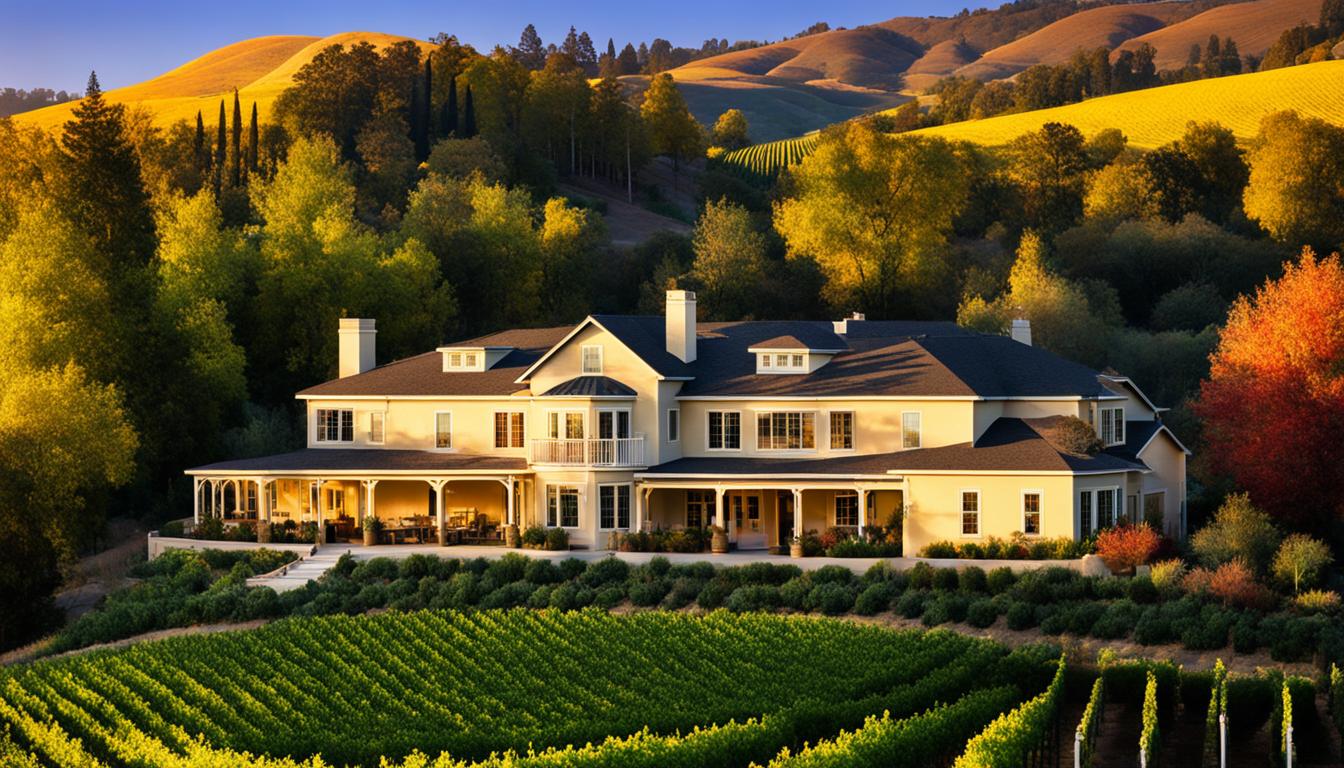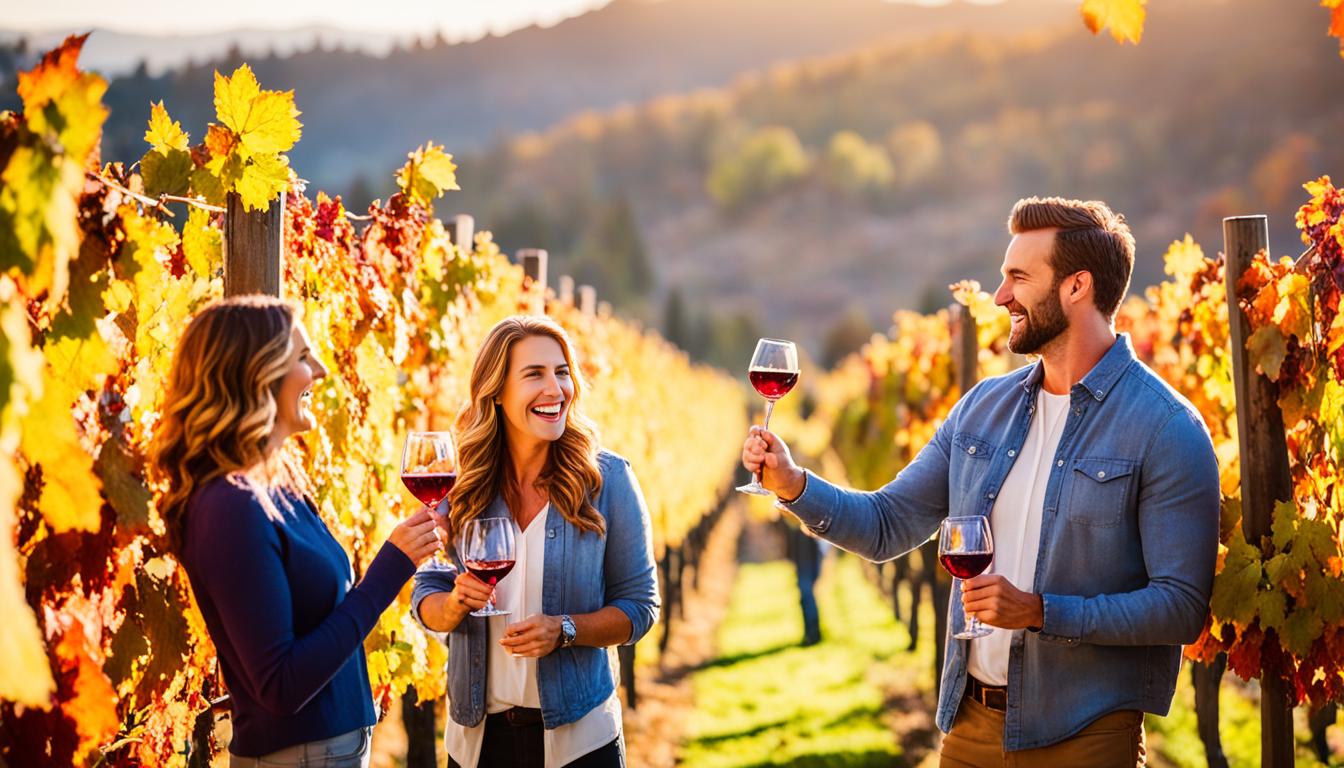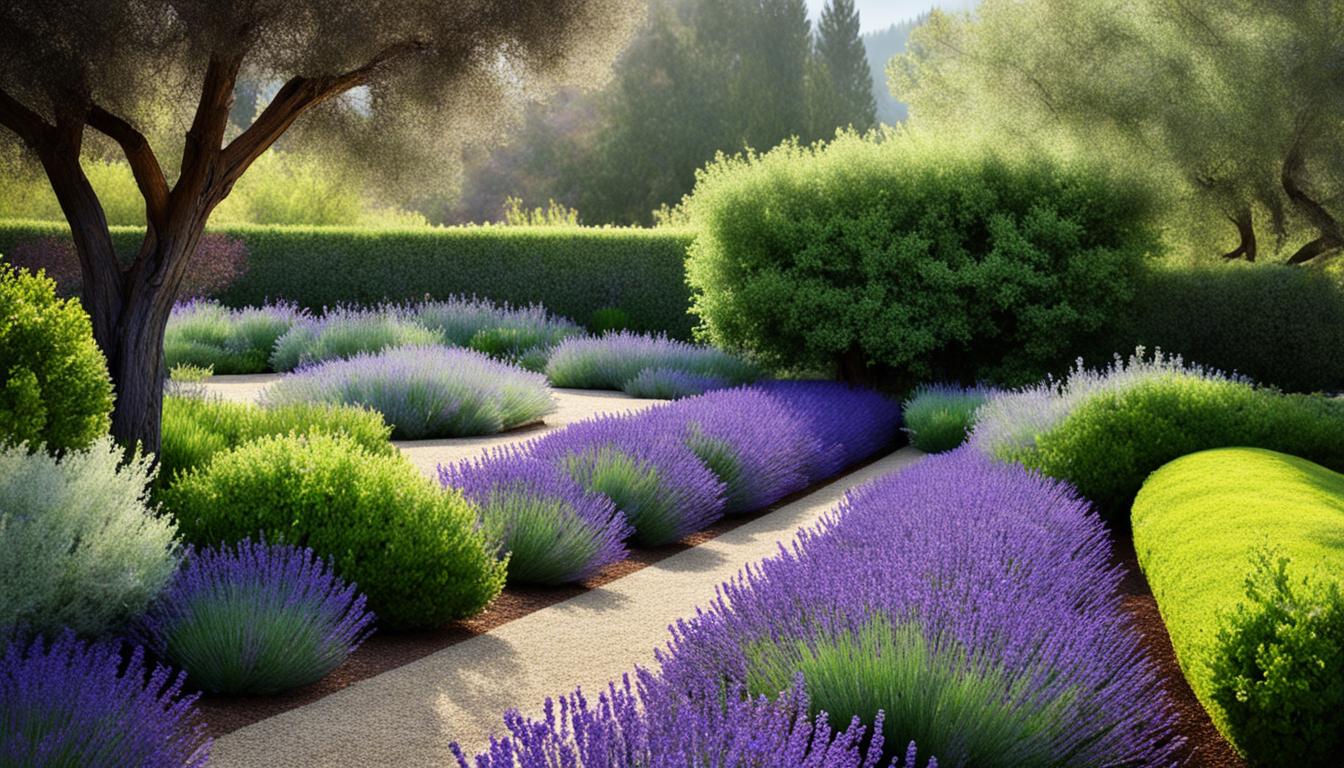Welcome!
Napa Valley, California: Best Months for a Weather-Savvy Trip
Napa Valley is in California's heart, known for its beautiful landscapes, top-notch wines, and great food. But when is the best time to visit? Knowing when to go can make your trip better and less crowded. So, what are the best months to see the real beauty of this place?
Key Takeaways
- Napa Valley offers diverse seasonal experiences, from the vibrant blooms of spring to the cozy ambiance of winter.
- Understanding the region's temperature patterns, precipitation trends, and crowd levels can help you plan the perfect trip.
- Avoid muddy vineyard tours by checking the weather forecast and packing accordingly.
- Weekday visits during the off-season can provide a more personalized and less crowded experience.
- Familiarize yourself with TSA regulations for transporting wine home to ensure a smooth travel experience.
Winter: A Relaxing Time to Visit Napa Valley
Napa Valley is famous for its wine and offers a peaceful escape in winter. After the busy harvest, the valley becomes calm and inviting. It's a great time to enjoy the quiet and explore its beauty.
Average Temperatures and Rainfall
From November to January, Napa Valley has cooler temperatures and some rain. Highs are in the 50s to low 60s Fahrenheit, and lows are around 40 degrees. It rains about 4 inches a month, with 8-9 rainy days.
Seasonal Highlights and Activities
Winter in Napa Valley is full of exciting events and activities. You can see the Calistoga Holiday Tractor Parade, the Napa Valley Truffle Festival, and the Napa Lighted Art Festival. These events show off the area's culture and traditions.
Winter is a great time to learn about Napa's olive oil. Places like Round Pond offer tastings and tours. You can also see the beautiful mustard blooms starting in February, adding color to the vineyards.
Napa Valley in winter has fewer people and a cozy feel. It's perfect for enjoying wine tastings and staying in places with fireplaces. Whether you want a romantic trip or a peaceful break, Napa Valley's winter will charm you.
Spring: The Season of Rebirth and Mustard Blooms
In Napa Valley, spring brings a fresh start with the first signs of life and mustard blooms. By February, the area buzzes with new vine shoots, marking the start of the growing season. This season is known for its changing weather, often with rain, especially in February.
Varying Weather Patterns
Spring weather in Napa Valley can be unpredictable. Even though most tasting experiences are indoors, you might face cool nights and rain. It's wise to check the weather forecast and pack a light jacket or umbrella for a dry visit to Napa's famous wineries and vineyards.
Packing Tips and Dress Code
For spring in Napa Valley, bring light layers and a jacket. The dress code is casual, but stylish. Remember, the winery caves stay around 58°F, so a warm jacket might be needed.
The mustard blooms in spring create a beautiful yellow carpet over the vineyards. It's a perfect time to see Napa Valley's natural beauty. Whether you're visiting wineries, enjoying farm-to-table food, or just taking in the views, spring is a magical season to visit.

Fall: The Bustling Harvest Season
Napa Valley comes alive in the fall, reaching its peak harvest season. From August to October, teams work hard in the vineyards, picking grapes by hand. Visitors can join special harvest tours to see this important winemaking step.
Vibrant Autumnal Colors and Mild Temperatures
The changing leaves turn Napa Valley into a stunning sight. You'll see oranges, reds, golds, and yellows across the hills. This makes a beautiful scene for your adventures.
The weather is just right, with highs in the 70s and lows in the 50s. It's ideal for winery tours, enjoying the harvest season, and taking in the autumn colors and fall temperatures.
| Month | Average Daytime High | Average Nighttime Low |
|---|---|---|
| August | 82°F (28°C) | 54°F (12°C) |
| September | 79°F (26°C) | 52°F (11°C) |
| October | 73°F (23°C) | 48°F (9°C) |
"The autumn colors in Napa Valley are simply breathtaking. The vibrant hues of the changing leaves create a stunning contrast against the rolling vineyards and picturesque landscapes."
Whether you're on winery tours, enjoying harvest season activities, or just taking in the autumn colors and fall temperatures, Napa Valley's fall is unforgettable.
Napa Valley, California: Best Months for a Weather-Savvy Trip
Planning a trip to Napa Valley, California, means knowing the best times to go. This famous wine area has different experiences all year. Each season brings its own weather, highlights, and crowd levels. Choosing the right months makes for a great trip.
February is a top choice for visiting Napa Valley. The weather is nice, with temperatures from 50 to 70 degrees Fahrenheit. It's also the low season, so there are fewer people and a more personal experience at wineries.
The vines may look bare, but it's a great time for a calm visit. With less traffic and easy parking, February offers a peaceful trip. It lets visitors enjoy Napa Valley's beauty without the busy crowds.
| Characteristic | Napa Valley in February |
|---|---|
| Temperatures | Highs of 50-70 degrees Fahrenheit |
| Crowd Levels | Significantly reduced compared to peak seasons |
| Seasonal Highlights | Bare vines, chillier weather, personalized winery experiences |
Visiting Napa Valley in February means a trip that's both weather-smart and intimate. It's a chance to dive deep into the wine culture and the area's stunning beauty.
Avoiding Muddy Vineyard Tours
When planning your Napa Valley trip, think about the weather and how it affects your vineyard tours. If it's going to rain or has recently rained, skip tours that involve walking in the vineyards. The trails might be muddy and hard to walk on.
Many Napa Valley wineries make sure their guests are safe and comfortable. So, always ask about their rules before you book. Some might have indoor tours or cancel if the weather is bad.
- Check the weather forecast before your Napa Valley trip and plan accordingly.
- Inquire with the wineries about their policies regarding muddy trails and inclement weather.
- Consider indoor or paved-path experiences if the Napa Valley vineyard trails are likely to be wet and slippery.
Being prepared and informed helps make your Napa Valley vineyard tour fun and safe, no matter the weather. Remember, Napa Valley wineries care a lot about your safety and comfort.
Booking Accommodations and Reservations
Planning your Napa Valley trip means thinking about booking places to stay and making reservations. Even in the off-season, some tasting rooms need reservations to keep things organized. The time you visit and hotel rates can also affect your experience.
Weekday vs. Weekend Visits
Coming to Napa Valley on a weekday can make your trip more relaxed and cheaper. Weekends and holidays get crowded, especially during big events like BottleRock and the Napa Valley Marathon. If you can, try to stay midweek to enjoy a calmer pace and save money.
It's smart to book your wineries and restaurants in advance, no matter when you go. This way, you won't miss out and can get into the places you want to visit. Many places, especially the popular ones, will ask for reservations, especially when it's busy.
| Weekday Visits | Weekend Visits |
|---|---|
|
|
Think about when you plan your Napa Valley trip and book your stay and reservations. This way, you can have a smooth and fun visit, whether it's on a weekday or a weekend.

Flying with Wine: TSA Regulations
Bringing home a taste of Napa Valley's renowned wines can be a delightful way to prolong your vacation memories. But, it's important to know the TSA rules for flying with wine. Wine can't go through the TSA check-in in your carry-on. But, you can pack it in your checked luggage if you're careful.
Use a strong, padded wine suitcase or bag to prevent breakage. These bags, costing under $100, add extra protection. Or, choose a stainless steel wine suitcase for $200 to $500 for a more durable option.
Wineskins are another good choice, costing less than $15. They're made to protect your bottles during travel. These flexible pouches absorb shocks and drops, keeping your Napa Valley wines safe.
Remember, while you can pack wine in checked baggage, there are rules. Check your destination's wine shipping laws before packing. Also, know the rules of shipping services like FedEx and UPS for wine.
| TSA Regulation | Details |
|---|---|
| Carry-on Baggage | Wine is not permitted in carry-on bags and must be packed in checked luggage. |
| Checked Baggage | Wine can be transported in checked baggage, but it must be packed securely to prevent breakage. |
| Quantity Limits | There are no specific quantity limits on the amount of wine that can be transported in checked baggage, but airlines may have their own restrictions. |
Learn the TSA rules and take precautions to safely bring home Napa Valley's finest wines. This way, your vacation memories will last long after you return.
Seasonal Events and Festivals
Napa Valley is famous for its lively seasonal events and festivals. These events give visitors a unique experience. From winter's festive fun to spring's food delights, there's always something exciting to do in this famous wine region.
Winter Events
When it gets colder and the vines sleep, Napa Valley turns into a winter wonderland. Visitors can enjoy the Calistoga Holiday Tractor Parade. It's a fun tradition where farmers and vintners decorate their tractors and parade through the streets.
The Napa Lighted Art Festival also lights up the town in winter. It features stunning light displays and art installations.
Spring Events
Spring brings Napa Valley to life with many food-focused events. The Napa Valley Truffle Festival is a big deal, celebrating the area's famous truffles. It includes cooking demos, truffle hunts, and fancy dining.
Napa Valley Restaurant Week happens in spring too. It lets visitors try the area's top dining spots at great prices.
| Event | Season | Description |
|---|---|---|
| Calistoga Holiday Tractor Parade | Winter | A festive parade where farmers and vintners decorate their tractors and take to the streets. |
| Napa Lighted Art Festival | Winter | A dazzling display of light installations and art exhibits that illuminate the town. |
| Napa Valley Truffle Festival | Spring | Celebrates the region's renowned truffles with cooking demonstrations, truffle hunts, and gourmet dining. |
| Napa Valley Restaurant Week | Spring | Allows visitors to indulge in the region's exceptional dining scene at special prices. |
Whether you like the cozy feel of winter or the lively vibe of spring, Napa Valley's events and festivals are unforgettable. They make any visit special.

Packing and Dressing for Napa Valley Weather
Planning a trip to Napa Valley means thinking about the weather. The area has different temperatures and rain all year. So, it's smart to pack clothes that can change with the weather.
Layering is key in Napa Valley. Take a medium-weight, waterproof jacket with a hood to keep dry in the rain. Wear comfy, breathable clothes that you can easily change as it gets hotter or colder. Choose fabrics like cotton, linen, or synthetic materials that keep you cool and dry.
For weather-appropriate footwear, choose comfort over style. You'll likely be walking on rough ground at wineries. So, wear strong shoes or boots with good grip to stay steady.
The dress code in Napa Valley is usually casual. But, always check with wineries or places you plan to visit for any special dress codes. Some spots might be a bit fancier, so it's good to be ready.
| Napa Valley Packing Essentials | Why They're Important |
|---|---|
| Waterproof Jacket with Hood | Protects against rain and cool breezes |
| Layerable, Breathable Clothing | Allows for temperature adjustments |
| Comfortable Walking Shoes | Navigates uneven vineyard terrain |
| Casual, Winery-Appropriate Attire | Fits the relaxed atmosphere of Napa |
With the right weather-appropriate clothing and layering pieces, you'll enjoy Napa Valley's varied climate. This way, you can make the most of your trip.
Exploring Beyond the Tasting Rooms
Napa Valley is famous for its top-notch wineries and tasting rooms. But there's more to see and do here. You can explore stunning lavender gardens and learn about olive oil production. These activities let you dive into the area's rich farming history.
Lavender Gardens and Olive Oil Mills
In the winter, check out the olive oil production. Visit places like Round Pond for tours and tastings. You'll learn how they make olive oil and taste their quality products. Some wineries, like Ceago, have beautiful lavender gardens. They're perfect to visit in spring and summer.
Walking through the gardens is peaceful and refreshing. You can enjoy the beautiful purple flowers and their sweet smell. It's a great way to relax and connect with nature.
Looking for something different in Napa Valley? Try visiting the lavender gardens and olive oil mills. It's a chance to get closer to the land, enjoy seasonal activities, and learn about the local farming traditions.
| Napa Valley Attractions Beyond Tasting Rooms | Highlights |
|---|---|
| Lavender Gardens | • Fragrant blooms and tranquil strolls • Seasonal experiences in spring and summer • Wineries like Ceago offer on-site lavender gardens |
| Olive Oil Production | • Olive oil tastings and tours • Learn about the artisanal production process • Estates like Round Pond showcase the region's olive oil heritage |

There's more to Napa Valley than just tasting rooms. Discover the beauty of lavender gardens and the art of olive oil production. These activities give you a deeper look into the local culture and history.
Beating the Crowds: Visiting During Off-Peak Times
For a more relaxed visit to Napa Valley, think about going during off-peak times. Visiting from Sunday to Thursday can save you money on hotels and give you a closer look at the wineries. You'll get more attention from the staff and can enjoy the region's unique spots at a calm pace.
Visiting Napa Valley when it's less busy means you can enjoy the wineries without the crowds. Most places close early, between 4-6 pm. Going on weekdays helps you skip the weekend crowds and enjoy tastings more intimately. Places like Muir Woods National Monument need reservations for parking, so plan ahead to get the most out of your trip.
Off-peak visits can also save you money on where you stay. Hotel rates are lower on weekdays in Napa Valley. This lets you try fancy wine tastings like the $60 ones at Silver Oak Winery or the $100 tastings at Cade Estate Winery without spending too much.
There's more to off-peak visits than just saving money. With fewer people around, you can talk to the winery staff, learn about the area's history, and find hidden gems. These spots might be missed during busy times.
To enjoy Napa Valley off-peak, plan well and book ahead. Weekday visits let you dodge weekend crowds for a more personal, affordable, and real experience of this famous wine region.
Conclusion
Napa Valley, California, is a top spot for wine lovers and those looking for a trip with great weather. By knowing the weather patterns, events, and tips, you can plan a perfect visit. You can enjoy the quiet of winter, the beauty of spring, or the lively fall harvest.
This guide gives you all you need to make your Napa Valley trip unforgettable. It helps you understand the weather and how to visit during quieter times. This way, you can plan a trip that fits what you like.
In Napa Valley, you can enjoy amazing wines, beautiful views, and the local culture. Knowing the best times to visit and what to expect each season lets you make the most of your trip. You'll get to fully enjoy the beauty and wine of this famous region.
FAQ
What are the best months to visit Napa Valley, California?
Napa Valley is great to visit all year, with each season offering something special. The best months are:
- Winter (November through January) for a calm vibe, fewer people, and cozy spots.
- Spring (February through May) for the beautiful mustard flowers and mild weather, though it might rain.
- Fall (August through October) for the harvest season and stunning autumn colors.
What is the weather like in Napa Valley during the winter months?
Winter in Napa Valley (November through January) brings cooler weather, with highs in the 50s to low 60s Fahrenheit and lows around 40. It rains a bit, with about 4 inches and 8-9 rainy days a month. It's a great time to visit, with fewer people and special events like the Calistoga Holiday Tractor Parade and the Napa Valley Truffle Festival.
What can visitors expect in Napa Valley during the spring season?
Spring in Napa Valley starts in February and goes through May. The weather can be a bit unpredictable, with rain, especially in February. But, most tasting rooms are indoors, and the mustard blooms are a beautiful sight. Spring also means the vines start to grow, signaling the start of the grape season.
What are the highlights of the fall season in Napa Valley?
Fall in Napa Valley is exciting, with the harvest season in full swing. From August to October, you'll see grape picking and special harvest tours. The vineyards turn into a colorful display of orange, red, gold, and yellow. The weather is mild, perfect for exploring the valley.
How can visitors avoid muddy vineyard tours in Napa Valley?
If it's going to rain or has recently rained, avoid vineyard tours that involve walking. Some wineries might not let you walk in the mud. Always check with the winery about their policies before you go.
What should visitors consider when booking accommodations and making reservations in Napa Valley?
When planning your trip, think about booking accommodations and making reservations. You don't always need a reservation in the off-season, but some tasting rooms might ask for it. Visiting on a weekday can be quieter and cheaper, while weekends and holidays are busier, especially during events like BottleRock and the Napa Valley Marathon.
What should visitors know about flying with wine from Napa Valley?
If you're bringing wine back from Napa Valley, know the TSA rules. Wine can go in checked luggage, not through the security check. Use an extra bag and bubble wrap to keep it safe during the flight.
What are some of the seasonal events and festivals in Napa Valley?
Napa Valley has many events and festivals all year. In winter, there's the Calistoga Holiday Tractor Parade and the Napa Lighted Art Festival. Spring brings the Napa Valley Truffle Festival and Napa Valley Restaurant Week, where you can enjoy the local food.
What should visitors pack for a trip to Napa Valley?
Pack layers for Napa Valley's changing weather. Bring a waterproof jacket and comfortable shoes for walking. The dress code is casual, but check with places you plan to visit for any specific dress codes.
Is there more to explore in Napa Valley beyond the tasting rooms?
Yes, there's more to see in Napa Valley than just wineries. In winter, learn about olive oil at places like Round Pond. Some wineries, like Ceago, have lovely lavender gardens in spring and summer.
When is the best time to visit Napa Valley to avoid crowds?
For a quieter visit, go during off-peak times. Weekdays, especially from Sunday to Thursday, are less crowded and cheaper. Avoid holidays and big events for a more relaxed experience.
Related Posts
By accepting you will be accessing a service provided by a third-party external to https://travel.com/